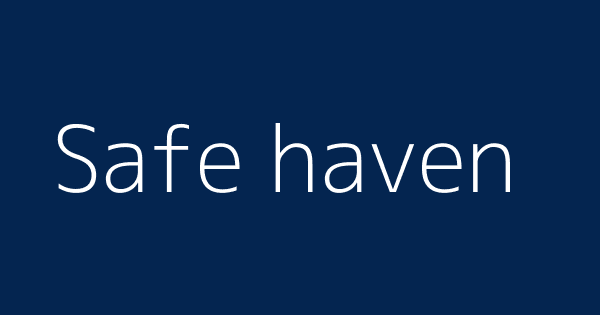How Is a Safe Haven?
Safe havens are an type of investment that is likely to maintain or increase in value in periods of market volatility. Investors search for safe havens to reduce their risk of losses during market volatility. But, the types of assets that are considered safe havens will vary based on the particular nature of the market downturn. This means that in the event that an investment is to be considered a safe haven, investors need to perform adequate due diligence.
Understanding Safe Havens
A safe haven investment can diversify the portfolio of investors and is useful during periods when markets are volatile. Most of the time when the market goes up or falls, it’s only for a brief duration. There are occasions when it is, for instance, when there is a recession in the economy in which the decline of the market can last for a longer period. If the market is unstable, the value of investments tends to fall dramatically.
Even though such events in markets are not unavoidable however, investors may opt for safe-haven assets that are not negatively with respect with the overall market in times of crisis. Although most assets are declining on the value scale, safer havens remain or grow in value.
Exemples of Safe Havens
There are numerous investments that are deemed as safe refuges.
Gold
Since the beginning gold was considered an asset to be stored. Since it is a physical product it is not able to be printed as money and its value isn’t affected by the interest rate decision taken by a government. Because gold has historically held its value throughout time, it acts as a kind of protection against economic disasters. When an unfortunate event occurs and lasts for a time the investors will accumulate their money in gold which increases the price of gold due to an increase in demand.
In addition in times of risk from inflation and the price of gold rises because it is priced at a higher price in U.S. dollars. Other commodities, like sugar, copper, silver corn, silver, and other livestock, have a negative correlation with bonds and stocks. They could also be used as secure refuges for investors.
Treasury Bills (T-Bills)
These bonds are backed by the complete credibility and faith that is the U.S. government and, therefore, are considered to be secure even in the most turbulent economic times. T-bills are considered non-risky since any amount put into them is paid back by the government after the bills mature. The investors, therefore, are more likely to invest in these investments when they feel the economy is in turmoil.
Defensive Stocks
The most common defense stocks include healthcare, utility biotechnology, utility, and consumers’ goods firms. Whatever the current market conditions consumers will continue to buy items for health, food as well as basic household items. Thus, companies that operate in the sector of defensive are likely to retain their value in times of uncertainty when investors are more eager of these stocks.
Cash
It is possible to argue that cash is the sole true safe haven in times of market turmoil. But, it does not offer actual return or yield, and is negatively affected by inflation.
Currencies
Certain currencies are thought to be as safe havens in comparison to other. In markets that are volatile investors and traders might want to convert their holdings of cash into these currencies to ensure security.
It is believed that the Swiss currency, the franc is considered to be a safe-haven currency. Because of its stability and the Swiss government and financial system and its financial system, the Swiss currency usually experiences an upward pressure that stems from a rising demand for foreign currency. Switzerland has a substantial stable, secure, and safe banking sector, a stable capital market, practically none unemployment, a very excellent standard of living with good exchange balance numbers.
The fact that Switzerland is not part of its membership in the European Union also makes it quite immune to any negative economic and political developments that happen within the region. In addition, Switzerland is also a tax safe haven for the rich who use Switzerland’s security and anonymity banking services to avoid taxation and conceal money they have stolen.
Alongside the Swiss Franc — and depending on the particular issue the market faces, the Japanese yen as well as the U.S. dollar are also considered safe-haven investments. In most cases, they are considered safe-haven assets. U.S. dollar is a standard safe haven for businesses who are in the midst of any currency instability because this is the reserve currency of the entire world, and the currency used in many international business transactions.
Each each year Morgan Stanley picks the most safest currencies for the year. In 2020 the investment bank chose to select the U.S. dollar as the most safest currency. The bank also identified the Japanese yen as well as the Swiss Franc as reasonably secure bets. In a research note Morgan Stanley analysts wrote, “We believe that for the U.S. dollar (USD) to be the safest currency, particularly with low U.S. rates make it more appealing as a currency for funding to carry trades.”
Special Takes into Account
The listed assets above aren’t guaranteed to keep their value during times when markets are volatile. Additionally, what is a safe haven varies as time passes. For instance, if an entire sector of the economy is experiencing a decline, however, one business within the sector is doing well, its stock might be considered a safe-haven. Investors must exercise due diligence when investing in safe havens as an asset which is considered to be a safe place to invest in an economic downturn might not be a wise option when the markets are in a rise.



